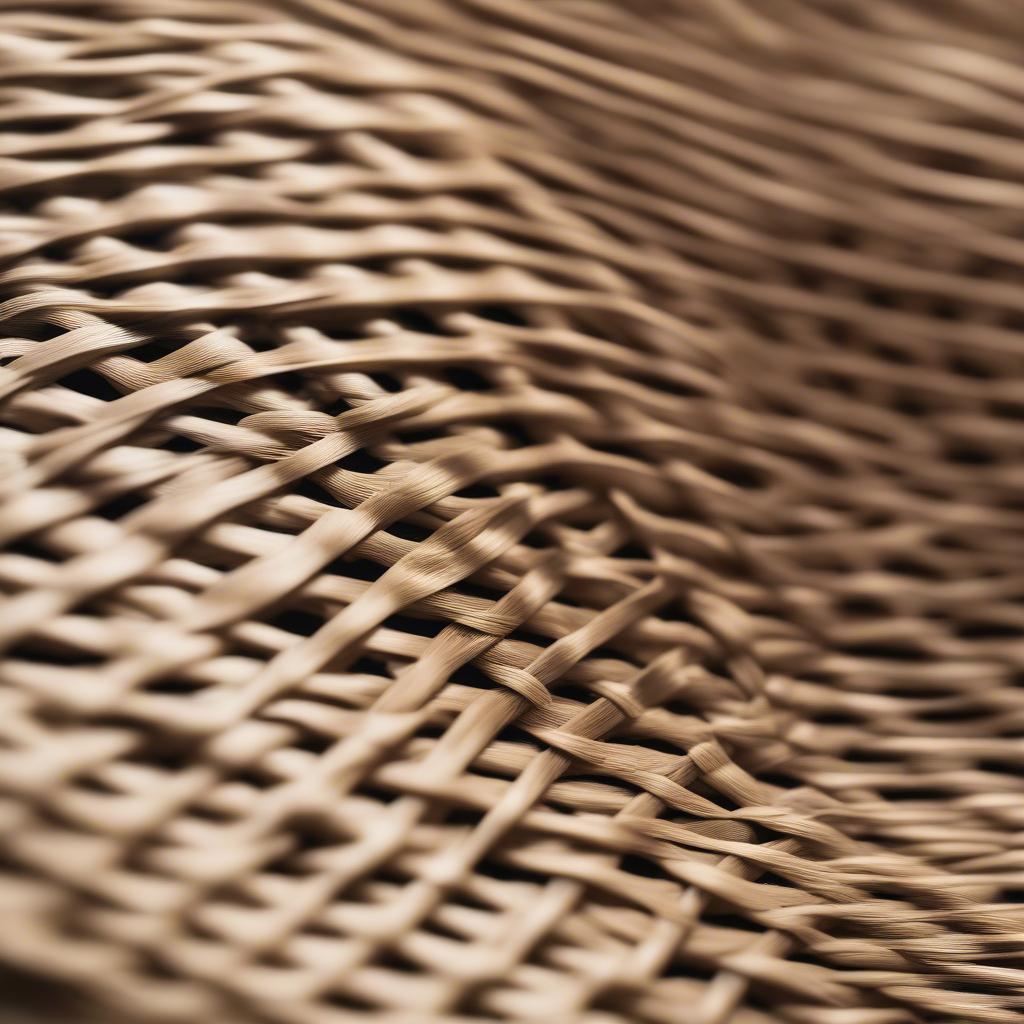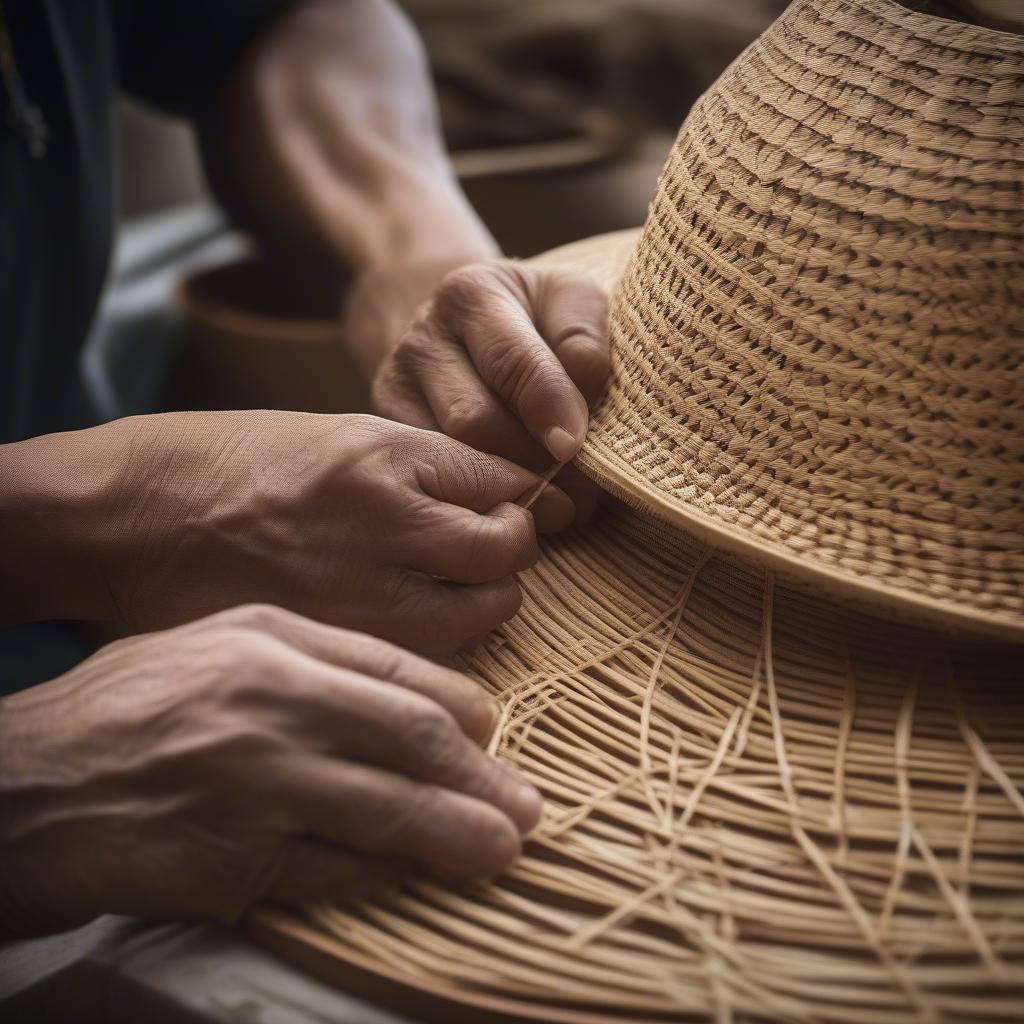Weave Hat
The Art of the Straw Hat Cross Weave
Straw Hat Cross Weave is a timeless technique used to create beautiful and durable headwear. This intricate weaving pattern not only adds visual interest but also contributes to the hat’s overall strength and structure. From classic Panama hats to trendy fedoras, understanding the intricacies of the cross weave opens up a world of appreciation for this traditional craft.
Unveiling the Secrets of Straw Hat Cross Weave
The cross weave, also known as the “over-under” weave, is a fundamental technique in straw hat making.  Close-up view of a straw hat showcasing the intricate cross weave pattern It involves interlacing straw strands diagonally, creating a distinctive checkered or crisscross pattern. This technique differs from other weaving methods like plaiting or braiding, resulting in a unique texture and appearance. The tightness of the weave affects the hat’s durability and its ability to provide shade. A tightly woven hat offers better protection from the sun, while a looser weave allows for greater breathability.
Close-up view of a straw hat showcasing the intricate cross weave pattern It involves interlacing straw strands diagonally, creating a distinctive checkered or crisscross pattern. This technique differs from other weaving methods like plaiting or braiding, resulting in a unique texture and appearance. The tightness of the weave affects the hat’s durability and its ability to provide shade. A tightly woven hat offers better protection from the sun, while a looser weave allows for greater breathability.
Choosing the Right Straw for Your Cross Weave Hat
The type of straw used plays a crucial role in the final product. Popular choices include toquilla straw, known for its fineness and used in Panama hats, and raffia straw, favored for its strength and flexibility. Other materials like wheat straw and seagrass are also used, each offering unique characteristics in terms of texture, durability, and appearance. The selection of the straw influences not only the hat’s aesthetics but also its practicality and lifespan.
Mastering the Straw Hat Cross Weave Technique
While the cross weave appears simple, mastering it requires skill and patience. The process typically begins with preparing the straw, which involves softening and flattening it to make it pliable.  Artisan's hands skillfully weaving a straw hat using the cross weave technique Then, the strands are carefully interwoven, following the over-under pattern to create the desired cross weave effect. Maintaining consistent tension throughout the weaving process is essential for achieving a uniform and aesthetically pleasing result.
Artisan's hands skillfully weaving a straw hat using the cross weave technique Then, the strands are carefully interwoven, following the over-under pattern to create the desired cross weave effect. Maintaining consistent tension throughout the weaving process is essential for achieving a uniform and aesthetically pleasing result.
“A perfectly executed cross weave is a testament to the artisan’s dedication and expertise,” says renowned hat maker, Isabella Rossi. “It’s a dance between precision and artistry, resulting in a piece that is both functional and beautiful.”
Caring for Your Cross Weave Straw Hat
Proper care can significantly extend the life of your straw hat. Avoid exposing it to excessive moisture or direct sunlight for prolonged periods. When not in use, store your hat in a cool, dry place, preferably in a hat box to protect it from dust and deformation. “Think of your straw hat as an investment,” advises Carlos Mendoza, a veteran in the hat industry. “With proper care, it can last for generations, becoming a cherished heirloom.”
Conclusion
The straw hat cross weave is a testament to the enduring appeal of handcrafted artistry. From the selection of the straw to the meticulous weaving process, each step contributes to the creation of a unique and beautiful piece. By understanding the intricacies of this technique, we can truly appreciate the skill and dedication involved in crafting these timeless accessories. So, the next time you admire a straw hat, take a closer look at its weave and appreciate the artistry behind it.
FAQ
- What is the difference between a cross weave and a plait?
- What type of straw is best for a durable straw hat?
- How can I tell if a straw hat is well-made?
- What is the significance of the tightness of the weave?
- How should I clean my straw hat?
- Where can I buy a genuine cross weave straw hat?
- What are some common styles of cross weave straw hats?
Please contact our Hotline: +84 388 951 999, located in Hanoi, Vietnam, or Tech Avenue, Suite 12, San Francisco, CA 94105, USA, for 24/7 customer support.
